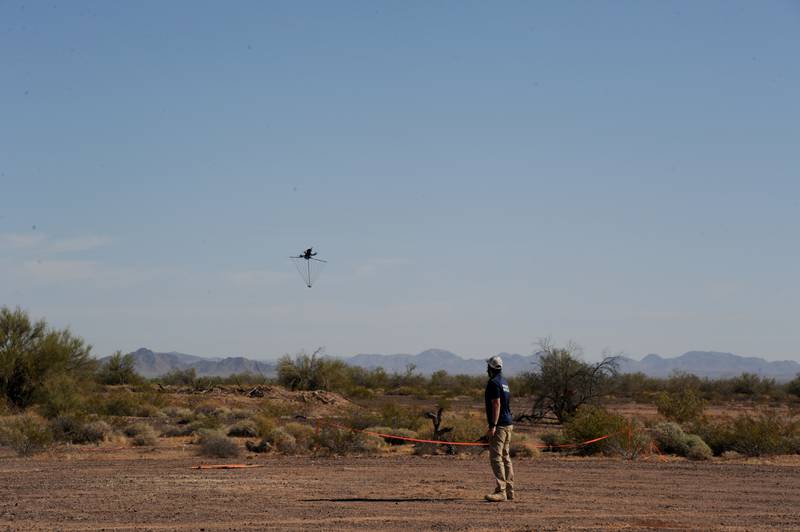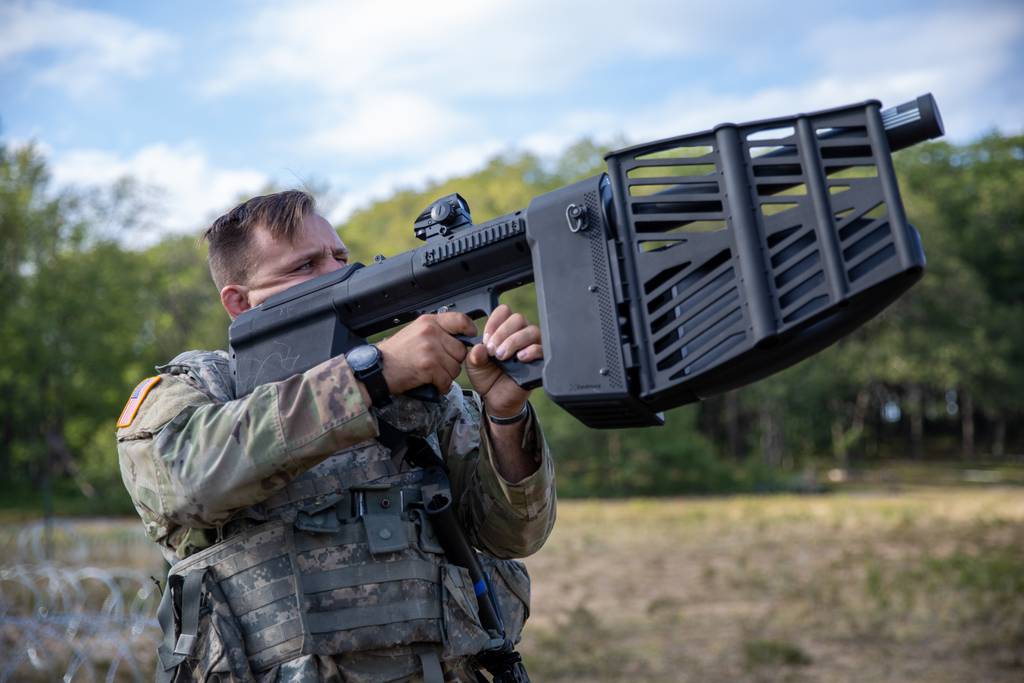WASHINGTON — Thanks to affordable material and the mitigated risk to humans, experts have pointed to drones as the future of conflict. Already, Russia and Ukraine have deployed drones on the battlefield, each seeking to increase its drone arsenal as their war approaches the eight-month mark.
For its part, the U.S. Army created the Joint Counter-Small Unmanned Aircraft Systems Office to address the proliferation of adversarial drones. The JCO came about after then-Defense Secretary Mark Esper in 2019 designated the Army as the executive agent for counter-UAS activities.
Maj. Gen. Sean Gainey serves as director of that office, and he spoke with C4ISRNET in September about what it takes to protect American interests against drones. This interview was edited for length and clarity.
The Army’s Fires Center of Excellence at Fort Sill, Oklahoma, focuses on counter-UAS capabilities. How is that effort going?
We’re going to transition what we’re doing at Yuma [Proving Ground in Arizona] into Fort Sill, and that process is happening right now. We’re starting to get the classrooms. They’re starting the program of instruction development. We’re working with the joint team across courses to make sure we’re maximizing all the [program of instruction] capability.

Will the center’s curriculum focus on different types of counter-UAS strategies, such as kinetic options versus electronic warfare options?
The curriculum will cover all of that. You’ll have an “operators’ course” that will really introduce operators to the spectrum of counter-UAS capabilities that are out there, really focus in on the systems the Army’s currently fielding at divisions and the other services are fielding at their sites or locations.
We’re really excited for our “planners’ course” because, right now, we really don’t have the planning or understanding of how to employ counter-UAS capability from a planner perspective, and that’s going to be a critical piece. That’s probably the course that’s going to be stood up first because, right now, as we’re putting capability out in our installation site, one of the biggest challenges is installation commanders having a planner that they can look at to do the employment of the capability and then lay out all the planning factors with it.
You recently talked about the need for more widespread knowledge across the force on counter-UAS systems. What is the JCO doing to facilitate that dissemination of training and knowledge across the entire force?
The first thing we did was put out a strategy. The strategy was really the first document that we put out that framed the problem for the entire enterprise. Then we put out a handbook based off what we’re doing forward in U.S. Central Command’s area of responsibility, capturing all the lessons learned. We not only provided that for the CENTCOM area of responsibility, but globally to all the combatant commands.
Right now, we’re on our fourth JKO [Joint Knowledge Online] module. If you go to JKO online, there are four modules there that span from operator-level familiarization all the way through policy implementations of employing counter-UAS capability. They’re actually really good modules, and we’re seeing a lot of interest out there.
RELATED

Are those modules a requirement?
It hasn’t been updated as a requirement, but my assumptions are, as we continue to move forward and continue to mature, the counter-UAS training requirements will become a requirement in the future. Right now, it’s available, and we’ll find that with soldiers who are preparing for preemployment training, most are more likely to leverage it.
One of the most recent rounds of U.S. assistance for Ukraine included the Vampire system made by L3Harris Technologies. The Pentagon called it a counter-drone system, but L3Harris didn’t advertise it as such. What’s the working definition of counter-drone at the moment?
If you look at some of our capabilities that we’re having a lot of success with in theater now, they weren’t put over there for that purpose. We’ve essentially maximized the capability in that system to give it a dual role, whether it’s taking down rockets or mortars; they now can take down drones. That’s just a natural evolution in the capability because the threat is so prevalent and so large.
You can’t have just a c-UAS capability everywhere. You’ve got to be able to leverage whatever capability you have. So yes, I would tell you that anything that has the ability to take down a drone may not be classified [as c-UAS], but will be utilized in our system-layered approach.
What safeguards are used for autonomous technologies?
At least right now, the human-in-the-loop piece is going to be there until there’s continuing comfort in the ability of a system. But you can start building autonomy without actually having somebody push the button. You can get to the point where it detects, and then the operator does the final push, the effects piece. At some point, that’ll be a strategic decision: When do you want to fully autonomize the ability to let this system shoot? Especially in the future you have things like swarms and other types of threats coming in at you and need to be able to rapidly respond to some of the capabilities.
Some of the autonomy will more than likely have to be built in here, but [the question is]: How far do you go with the autonomy? I don’t think right now anyone is suggesting that we walk away from the system and just let the system do it itself from a defeat perspective, but we’re still looking to leverage technology that can get us there. Eventually, we’ll start having those policy discussions on how we move forward with the autonomous defeat.
How have lessons from the war in Ukraine shaped — or are currently impacting — decisions within your command?
What we’re seeing is what we’ve expected. We’re seeing that the EW capability we’re using works well. We see the kinetic ability working well. What it’s reemphasized is the threat’s ability to leverage drones and UASs to their advantage. If you don’t have a robust capability inside of your force, integrated air and missile defense system, a layered integrated approach with the common [command and control], you’re going to have challenges against these threats; and having it all the way down to the operator level to be able to respond at the operator level.
We’re seeing all of those types of trends employed and reinforcing what we need in order to ensure we’re doing [the right thing] as we continue to move forward and shape our forces.
Catherine Buchaniec is a reporter at C4ISRNET, where she covers artificial intelligence, cyber warfare and uncrewed technologies.








